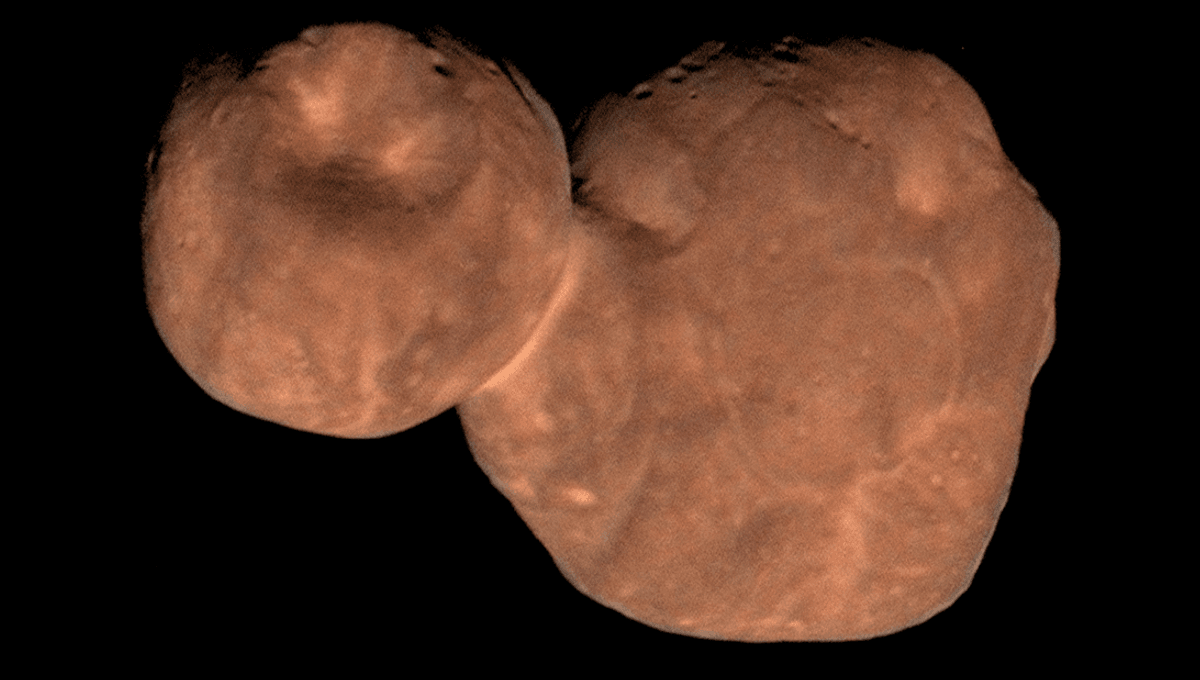
In 2006, NASA launched New Horizons on a long journey to study dwarf planet Pluto over 5 billion kilometers (3.1 billion miles) from Earth.
The spacecraft first headed to gas giant Jupiter for a gravity assist in 2007, in a maneuver which would increase its velocity by around 14,000 kilometers per hour (9,000 miles per hour). As it did so, it imaged Jupiter’s moons Io, Europa, and Ganymede, before heading towards Pluto at its new zippy speed of around 300 million miles per year.
Arriving at its primary target in 2015, the spacecraft collected data on Pluto and its moons Charon, Nix, Hydra, Kerberos, and Styx.
“Data from New Horizons clearly indicated that Pluto and its satellites were far more complex than imagined, and scientists were particularly surprised by the degree of current activity on Pluto’s surface,” NASA explained of the mission. “The atmospheric haze and lower than predicted atmospheric escape rate forced scientists to fundamentally revise earlier models of the system.”
But the spacecraft was not done yet. Following the Pluto flyby, NASA redirected it towards an object in the Kuiper belt, around 6.4 billion kilometers (4 billion miles) from Earth. When it arrived in 2019, the object became the most distant object ever visited by a spacecraft.
The object was officially named Arrokoth in 2019 after the word for “sky” in the Powhatan/Algonquian language.
“The name ‘Arrokoth’ reflects the inspiration of looking to the skies and wondering about the stars and worlds beyond our own,” Alan Stern, New Horizons principal investigator from Southwest Research Institute, Boulder, Colorado, said in a statement at the time. “That desire to learn is at the heart of the New Horizons mission, and we’re honored to join with the Powhatan community and people of Maryland in this celebration of discovery.”
Arrokoth is a contact binary, with one lobe in contact with a smaller lobe, resembling a space snowman. The two lobes are believed to have clumped together under the force of gravity, but this closeup view of the asteroid revealed a few mysteries.
“What we’ve learned after sitting down and scratching our heads a little bit is that it’s what we call a ‘cold classical Kuiper Belt’ object,” New Horizons mission scientist Carey Lisse told the BBC’s Sky at Night magazine.
“It’s not cold because it’s far from the Sun; it’s dynamically cold. Its orbit has been pretty much the same for the entire history of the Solar System.”
These “cold” objects make up around a third of the Kuiper belt, with their circular orbits indicating that they haven’t been disturbed too much by the giant planets of the Solar System.
The team believes that Arrokoth is a “primordial” object, being largely unaffected by other objects in the past 4.6 billon years. That makes it pretty useful for studying the early Solar System, though heating can still affect the object at its surface, and perhaps as much as 10 meters (32 feet) deep.
One interesting aspect of the object, studied since New Horizon’s brief visit, is how the two lobes came together.
“They are just touching each other, it’s like they are kissing, or if they were spacecraft they would be docking,” New Horizons co-investigator William McKinnon explained to Sky and Telescope. “There is no evidence that the merger of these two lobes was at all violent.”
According to that team, the two objects must have come together very slowly indeed, impacting at relative speeds of less than 3 meters per second. Others have put the velocity of impact at even lower.
“We find that the individual mapped mounds on Arrokoth’s larger lobe, Wenu, are consistent with the merger or assembly of discrete, similarly sized multi-km-scale planetesimals from Arrokoth’s natal collapse cloud,” another recent team, which looked closely at mounds on the object, explained in their paper.
“Our numerical calculations of collisional mergers of precursor bodies indicate that normal impact speeds ≲1 m/s are necessary to preserve the shapes of the individual subunits, using gravel friction parameters.”
Further study of such objects could tell us a lot about the formation of the Solar System. While no further trips are planned to Arrokoth, New Horizons is still operational.
“The New Horizons mission has a unique position in our solar system to answer important questions about our heliosphere and provide extraordinary opportunities for multidisciplinary science for NASA and the scientific community,” Nicola Fox, associate administrator for NASA’s Science Mission Directorate in Washington, said in a 2023 statement. “The agency decided that it was best to extend operations for New Horizons until the spacecraft exits the Kuiper Belt, which is expected in 2028 through 2029.”
If another suitable target can be identified soon, New Horizons may be able to take a closer look at it, revealing further details of the Kuiper belt.
Source Link: What We Saw When NASA Sent A Probe To Explore The Kuiper Belt Object Arrokoth